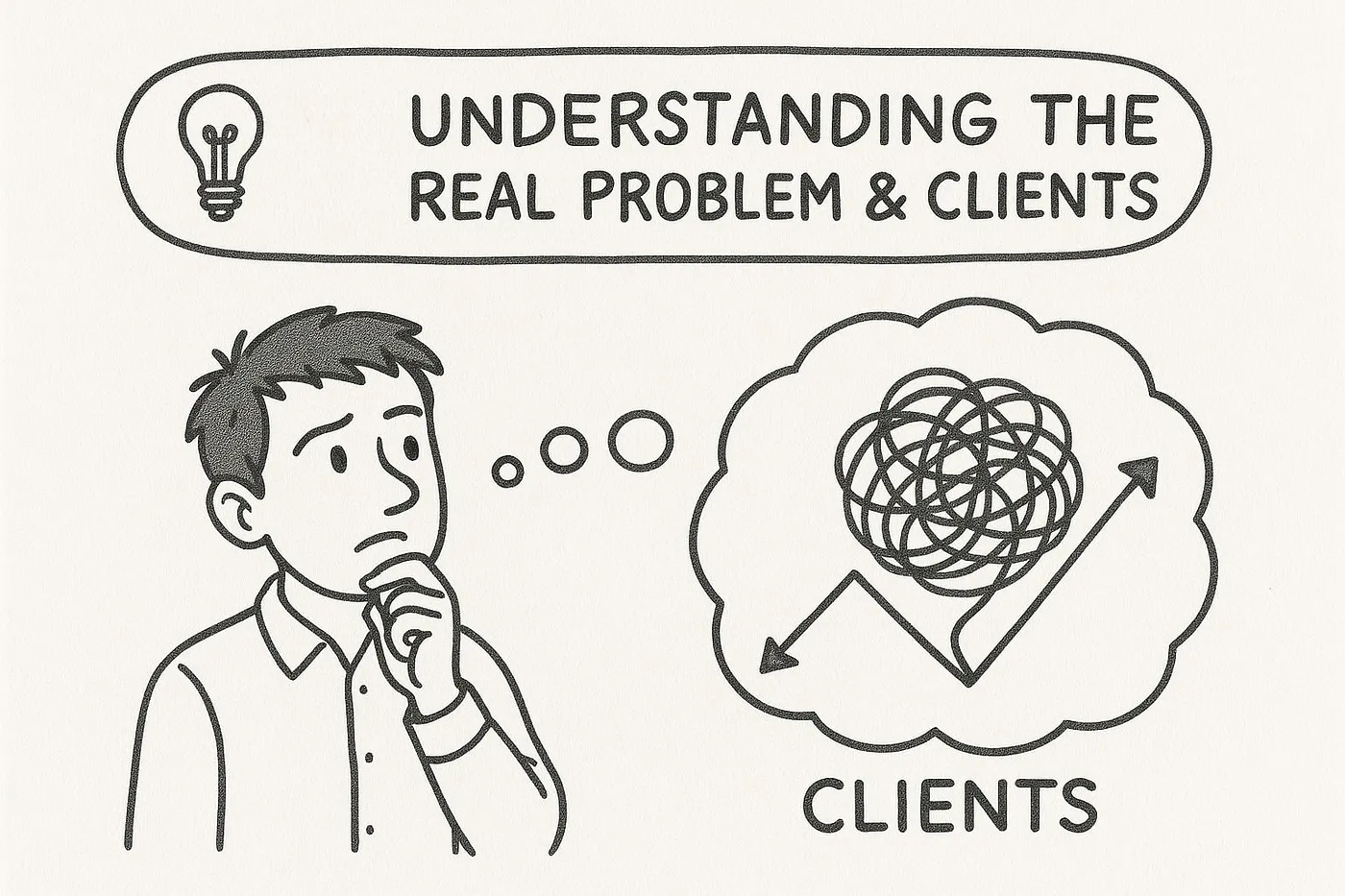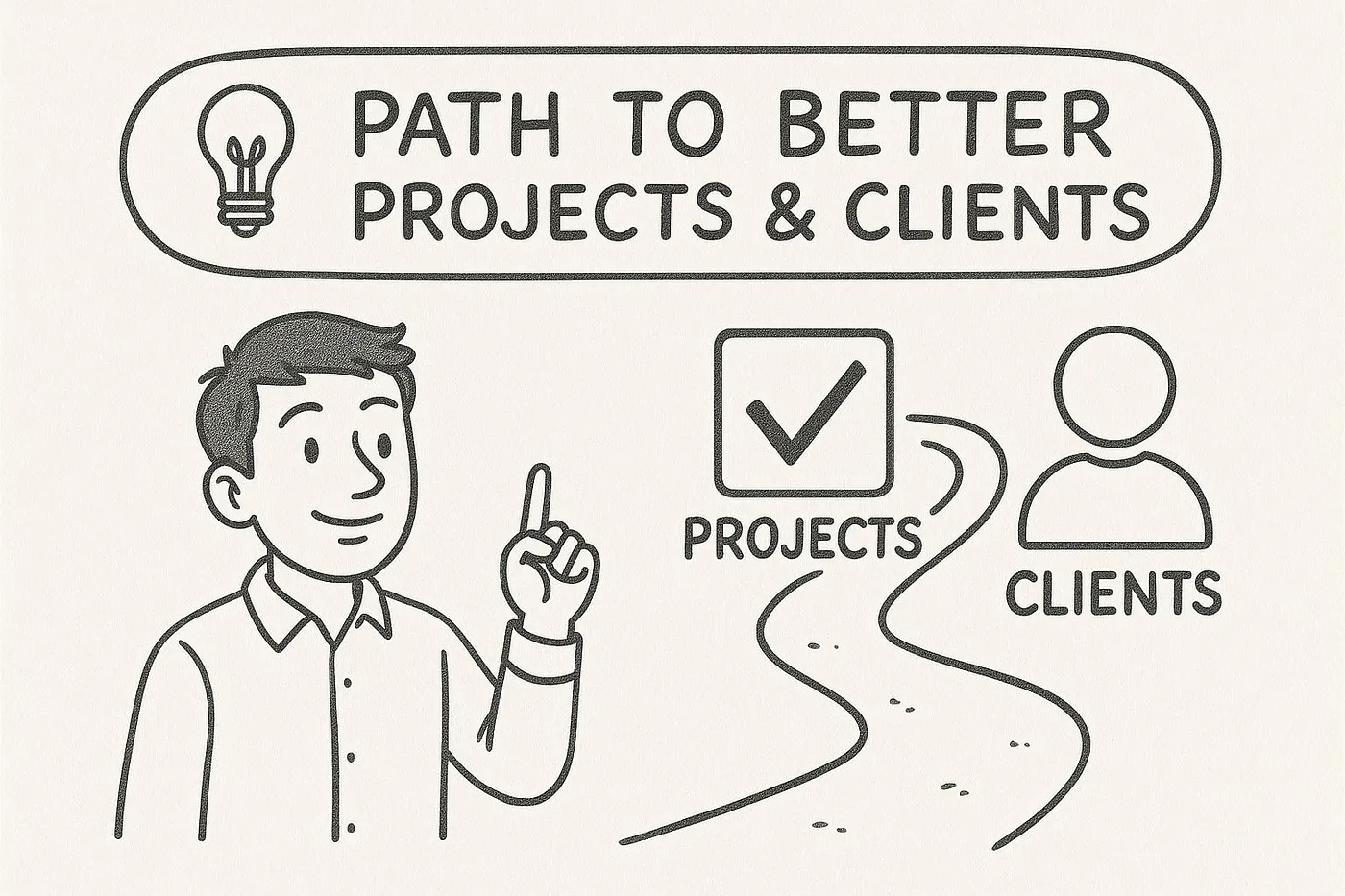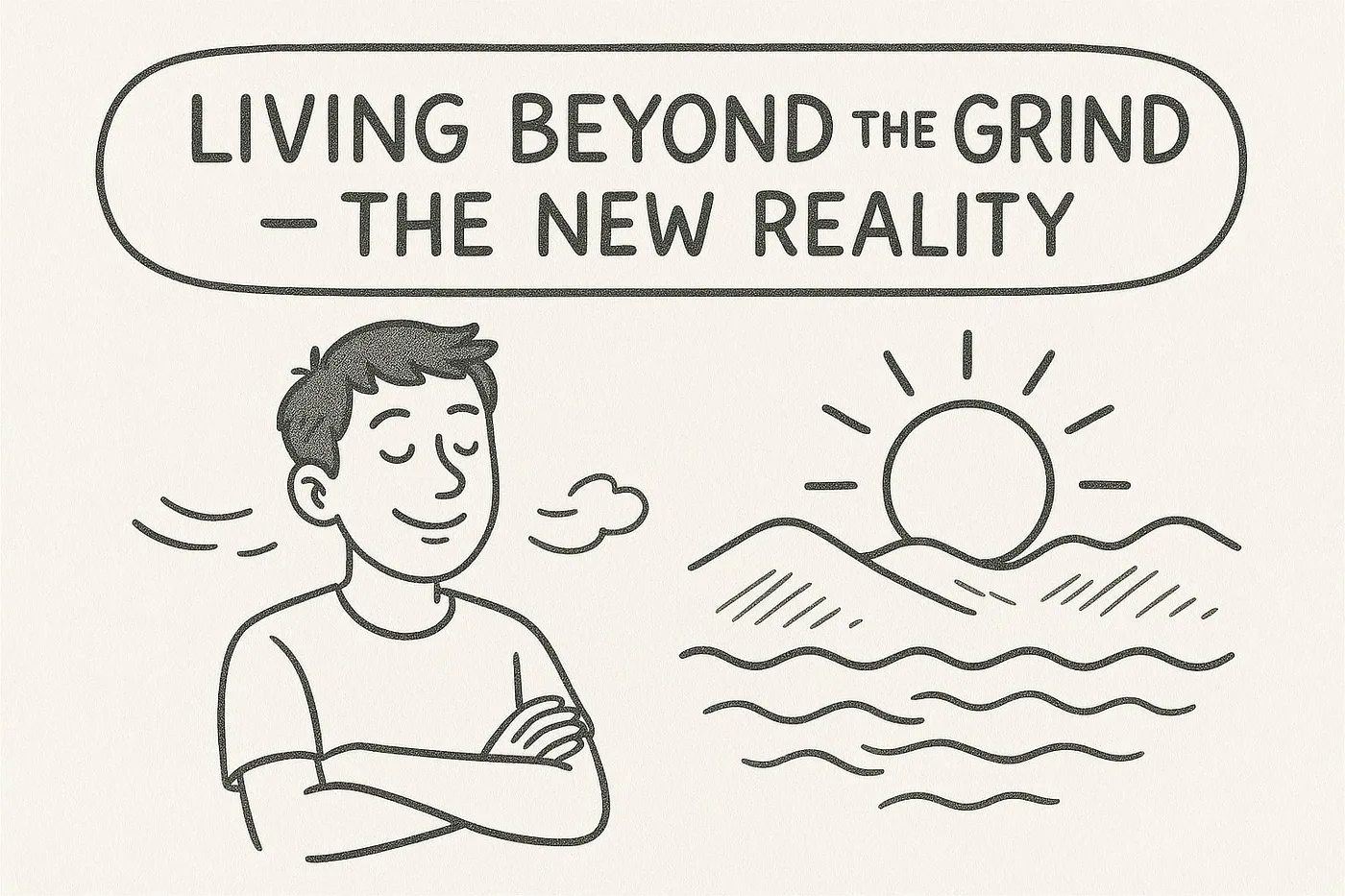How I Went From Building $100 Websites to Landing $5,000+ Projects
The mindset shift that stopped me from chasing cheap clients and started attracting high-value partners who respect my work.

📚 Get Practical Development Guides
Join developers getting comprehensive guides, code examples, optimization tips, and time-saving prompts to accelerate their development workflow.
As a freelance developer, I love building. I took every deal, no matter the price. It wasn’t sustainable. Even when I was landing work, I wasn’t earning enough to make it worth it. I was learning a ton, but something had to change.
That shift started the day I stopped being “cheap” and started thinking like a problem-solver.
I’ve been there and now I want to share how I moved from chasing every gig to finding work that’s not just more profitable, but way more fulfilling.
Part 1: The “Code Grind”
Chasing $100 Websites and Ghosting Clients
When I first dived into freelancing, my main thought was, “I need experience, I need a portfolio.” I had no big network, and honestly, why would anyone just trust me out of the blue? I’d look around at platforms like Upwork, seeing all those polished profiles, or at web agencies with their impressive portfolios. It felt like I had to start somewhere, anywhere.
So, I decided to offer a simple website for just $100. The math seemed okay on paper. Hosting could be cheap or free for something basic. Vercel allows 100 projects, Netlify allows 500 static websites for free. I figured I could build these quickly.
But what I hadn’t factored in properly was the clients. Despite offering what I felt was tremendous value, many of them just didn’t seem to get it. I was reaching out cold on Facebook to people posting in groups who seemed like they could use a website to make more business. And lots of people expressed interest. We’d have calls. I even built some websites. And then… silence. They’d ghost me. Or replies would be super late, sometimes weeks or even months delayed.
They kept saying they are busy at the moment and will get back to me.
I’d see them struggling to find more business, and I’d think, “If you just had that website up and running properly, it would help you so much!” But the dots just weren’t connecting for them.
It made me wonder, perhaps there’s a reason some businesses struggle, and it’s tied to how they value foundational tools.
Now, not everyone was like this. Some clients were amazing, super satisfied, grateful, and the whole process was painless. Those were the glimmers of hope that kept me going, but they were rare.
The Trap of “Anyone Can Code” & a Surprising Revelation
I knew that chasing the lower end of the market has its own issues and potentially difficult customers to work with.
A thought kept nagging me: “Coding and programming isn’t that special anymore.” It’s like any other profession, right? Plus, with the rise of AI coding tools and no code website builders, the barrier to entry seems lower every day. If you’re willing, you almost don’t need deep software skills to launch a basic website.
This led me to believe that the only way to compete was to offer incredible value at a very attractive, almost rock bottom price.
I was stuck in a mindset where I felt I had to justify my existence by being cheap.
Then something interesting happened, a real turning point. While I was reaching out to another company for a simple page refresh, they expressed interest, and we had a call. During our chat, the prospect mentioned, almost like it was a joke, how much he’d paid in the past for a very modest site — a price that was easily double what I probably would have quoted him at that time! It was clear he felt that previous site wasn’t great and had just been a stopgap.
This was a lightbulb moment. Inspired by his casual comment, when I sent him an offer, I priced it at nearly five times what I usually charged for similar work. Yes, there were more features, but the price jump was mostly because his comment showed me he was operating in a different league.
He clearly valued quality over just getting something cheap.
And guess what? He accepted the deal, happily. What was even more surprising was that before agreeing, he didn’t ask me for any examples of my past work, no website portfolio, nothing. He just seemed to trust me to do the work based on our conversation. It was a powerful lesson: this client valued his money as an investment in quality and trusted expertise when he saw it.
Part 2: Understanding the Real Problem & The Importance of Who You Work With

Why That Client Paid 5x More
So, what made the price difference palatable to that client? It wasn’t just my brilliant code. This company had an established, reputable business, but their website was visibly outdated. It was making a bad impression, potentially costing them credibility and customers. For them, an outdated website wasn’t a minor inconvenience; it was an expensive problem. Their reputation was on the line.
The ability to identify real problems, design smart solutions, and build trust. That’s what clients pay for.”
As Chris Dunlop discusses in his insightful article “Finding Clients with Expensive Problems,” the value of your solution is directly tied to the pain of the problem for that specific client. My $100 website clients? Their “problem” often wasn’t painful enough for them to truly invest in the solution, or they simply didn’t perceive the value.
What Makes a Problem “Expensive”? (And How to Spot Them)
An “expensive problem” isn’t just a technical challenge. It’s a business situation where the cost of inaction far outweighs the cost of your solution.
Think about:
- Measurable revenue loss or blocked growth.
- Ongoing operational inefficiencies costing real money and time.
- Exposure to compliance, legal, or reputational risks (like my 10x client!).
- Key strategic initiatives being held back.
Often, you’ll find these problems more frequently in industries that are traditionally less tech savvy. They might have deep domain knowledge but are running on outdated systems or manual processes.
Why Your Clients Can Make or Break You
This is a big one, something Seth Godin talks about a lot in “The Practice.” Who you choose to work with is just as important as what you do for them. My experience with the $100 website clients, the ghosting, the endless delays — it taught me this firsthand.
They might not be ready or willing to invest in the very things that could help them grow.
You want partners, not just people who pay invoices (sometimes late).
Look for green flags:
- clear communication,
- respect for your expertise,
- decisiveness, and
- a genuine desire to solve their problem.
And be wary of red flags:
- constant haggling,
- unclear requirements, or
- a general lack of respect.
The Importance of Scope (Even With Good Clients)
Now, even with that higher paying client, the one who valued quality, I learned another crucial lesson. The lack of creative fulfillment and the feeling of burnout? It can still creep in if you’re not careful, regardless of the price. I initially thought when I landed this bigger client, all would be good. But I still felt absolutely gassed by the end and was just relieved when it was done.
Why? Because I’d agreed to all sorts of customizations and complex integrations — things like pulling posts from his Facebook page onto the website, using AI to rewrite the post copy into project pages, and automatically adding images to a gallery. This even required creating a private app on Meta. The complexity snowballed.
The lesson was clear: it’s not just about finding clients who pay well. It’s also critically important to define scope clearly and manage expectations, even with the best clients. Otherwise, you’re just trading one kind of grind for another.
Part 3: The Path to Better Projects & Clients

Why Your Developer Skills Are Perfect for Solving These Problems
As developers, we have a unique superpower. It’s not just about writing code. It’s about logical thinking, problem solving, understanding systems, and the ability to build tangible solutions that can transform a business process. And yes, knowing how to leverage modern tech, including AI as a tool when it makes sense and is well scoped, can be a massive differentiator, especially for businesses that haven’t had access to that kind of expertise before. Don’t sell yourself short.
Here are 5 tips that worked for me
Photo by Jack Carter on Unsplash
TIP #1: Find Companies with Expensive Problems
So, how do you find these companies with expensive problems who are also good potential partners? It involves research, but with a new lens:
- LinkedIn: Look for companies of a certain size (say, 50–250 employees, as Dunlop suggests) in your target industries (UK, US, Germany for me). Look for new executive hires who might have a mandate for change.
- Industry News & Reports: What are the common challenges or regulatory pressures in specific sectors?
- Job Ads: What roles are companies hiring for that indicate manual processes or system gaps?
- Focus on the Underserved: Think about those less tech savvy industries. Construction, manufacturing firms, logistics companies — they often have significant operational pains that modern software could alleviate.
TIP #2: Initiate Contact Without Sounding Like Every Other Dev
Once you have a potential company in mind, don’t just send a generic “I build websites” email. Offer a “Value Spark” first. This could be a short Loom video with a quick idea, a mini audit of a potential issue you’ve spotted, or a concept sketch. Frame it in their language. Focus on the business outcome, not just the tech specs. Show them you’ve thought about their specific potential problem. This builds trust, like my 10x client showed when he hired me without seeing a portfolio.
It works because it immediately addresses their deepest concerns. When you spot a specific issue on their website and offer a thoughtful solution, you’re demonstrating that you understand their business context, you’re skilled enough to identify real problems, and you’re proactive enough to think beyond just completing tasks.
For example, instead of “I noticed your website could use some improvements,” try something like: “I was looking at your product pages and noticed that your checkout abandonment might be higher than it needs to be. The ‘Add to Cart’ button is competing with three other call-to-actions on the same screen. I put together a quick 2-minute video showing how a simple layout adjustment could potentially increase your conversion rate by 15–20%.”
TIP #3: From “What Do You Want?” to “Here’s What Works”
This was a game changer for me in managing scope and positioning myself. I used to ask clients, “Hey, what do you want? We can do this, and that, and this other thing too?” This often led to scope creep, me undervaluing my own expertise, and ultimately, burnout (as I experienced even with the better client).
Now, inspired by writers like Marilyn Wo who talk about productizing services, I’m shifting my approach. It’s more like, “With my 8 years of experience in this, for your specific type of business and problem, X and Y would work best. Here are two focused options I recommend based on that. Which one do you prefer?”
This positions you as the expert. You set the terms and offer clear packages. It’s about standardizing your genius. For example, instead of “custom web app for anything,” maybe it’s a “Standardized Internal Process Automation Setup” or a “Quick-Launch Reputational Website Package for Established Businesses.” This is for that initial “foot in the door” project, often in the $5k-$15k range that a manager can approve without endless bureaucracy. This helps prevent the “customization creep” I mentioned earlier.
TIP #4: The “Expansion Dollar” Strategy: Turning Small Wins into Big Relationships
That initial, well defined, perhaps productized project isn’t just about the initial fee. It’s about building trust and proving your value. This is where the “Expansion Dollar” concept, which Jen Abel champions and Chris Dunlop highlights, comes in.
Once you deliver an excellent solution to their first expensive problem, you’re in a prime position to understand their business more deeply and identify other areas where you can help. That small win can lead to much larger, ongoing, high value work.
TIP #5: Pricing for Value, Not Hours
This naturally follows. When you’re solving expensive problems and delivering clear ROI, the conversation shifts away from your hourly rate. You’re no longer just charging for your time; you’re pricing based on the value you create for their business.
Setting your price according to the size of the problem you’re solving, not the number of hours it takes to solve it
Often, that value shows up in less obvious ways — through improved confidence, reputation, or decision-making rather than direct revenue alone.
For example, consider a B2B manufacturing company. Their website might not seem like a critical asset at first. But if their sales team is even slightly less confident sharing it because they know it’s outdated or unprofessional, that hesitation can have real business consequences. It might slow down sales cycles, weaken conversations, or cause missed opportunities. Over the course of a year, even a minor drop in confidence can translate into large financial impact. What seems like a small issue in relative terms can result in substantial absolute losses.
This is why large companies are often willing to invest thousands of dollars to improve something that may appear non-essential. For them, it’s often a “nice to have” that protects future revenue or brand credibility.
And for you as a freelancer, this creates a powerful dynamic. You receive a significantly larger payout for solving a problem that might not be any more complex than work you’ve done before. At the same time, because the issue isn’t critical in their day-to-day operations, the client tends to be less intense, less hands-on, and more trusting. The stakes are high in financial terms, but low in emotional urgency.
Part 4: Living Beyond the Grind — The New Reality

More Impact, More Income, More Freedom
Shifting my mindset and approach is an ongoing journey, but the difference is already noticeable. I’m focusing on projects where I can make a real impact, which naturally leads to better income. But more than that, there’s a greater sense of freedom and fulfillment. Client relationships are more like partnerships, and the work itself is more engaging because I’m solving meatier problems. And honestly, there’s less stress from dealing with clients who aren’t a good fit or projects with runaway scope.
Your First Steps to Ditching the Code Grind Today
If any of this resonates, here are a few small things you can start doing today:
- Pick one industry that seems less tech savvy but likely has operational pains. Spend an hour researching common problems they face.
- Think about one common problem you’ve solved before. Could you define a “productized” entry level service around it? Just sketch out the basic package.
- Identify one characteristic of an ideal client for you. Actively look for that (and its opposite, the red flag) in your next potential interaction.
So, that’s a bit of my story and the lessons I’m learning. I hope sharing this helps you think about your own path as a developer. Ditching the grind isn’t easy, but building a business around solving real, valuable problems for clients who appreciate it, and doing it in a way that respects your own well being? That’s incredibly rewarding.
Thanks for reading,
Matija